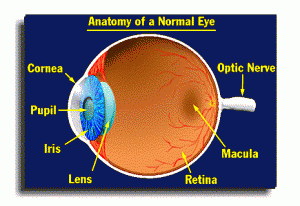What's A Degenerate
It's telling you that it is a sick degenerate that let the demons persuade it to be a faggot and now it's is blaming everything but itself. Anonymous 03/07/21(Sun)12:12:23 No. A version of this article appeared in the issue of Publishers Weekly under the headline: “Degenerate” Books for Discerning Readers.

- What's the difference? The skin on our bodies is one massive organ. In fact – skin is the largest organ in the body. Ironically, it is the part of the body that we pay the least attention to. Aging causes our skin to degenerate in its function.
- What’s the longest time it’s taken, and what’s the average? I get into some pretty marathon sessions. I’ve spent four- or five-hour evenings with a mare because she wanted more. It was multiple climaxes. Usually it takes a half-hour, an hour at most just to make sure. And, honestly, like most men I can deal with myself in five minutes.
A dwarf star is a star of relatively small size and low luminosity. Most main sequence stars are dwarf stars. The term was originally coined in 1906 when the Danish astronomer Ejnar Hertzsprung noticed that the reddest stars—classified as K and M in the Harvard scheme could be divided into two distinct groups. They are either much brighter than the Sun, or much fainter. To distinguish these groups, he called them 'giant' and 'dwarf' stars,[1] the dwarf stars being fainter and the giants being brighter than the Sun. Most stars are currently classified under the Morgan Keenan System using the letters O, B, A, F, G, K, and M, a sequence from the hottest: O type, to the coolest: M type. The scope of the term 'dwarf' was later expanded to include the following:
- Dwarf star alone generally refers to any main-sequence star, a star of luminosity class V: main-sequence stars (dwarfs). Example: Achernar (B6Vep)[2]
- Red dwarfs are low-mass main-sequence stars.
- Yellow dwarfs are main-sequence (dwarf) stars with masses comparable to that of the Sun.
- Orange dwarfs are K-type main-sequence stars.
- A blue dwarf is a hypothesized class of very-low-mass stars that increase in temperature as they near the end of their main-sequence lifetime.
- A white dwarf is a star composed of electron-degenerate matter, thought to be the final stage in the evolution of stars not massive enough to collapse into a neutron star or black hole—stars less massive than roughly 9 solar masses.
- A black dwarf is a white dwarf that has cooled sufficiently that it no longer emits any visible light.
- A brown dwarf is a substellar object not massive enough to ever fuse hydrogen into helium, but still massive enough to fuse deuterium—less than about 0.08 solar masses and more than about 13 Jupiter masses.


See also[edit]
References[edit]
What's A Degenerate In Math

- ^Brown, Laurie M.; Pais, Abraham; Pippard, A. B., eds. (1995). Twentieth Century Physics. Bristol; New York: Institute of Physics, American Institute of Physics. p. 1696. ISBN0-7503-0310-7. OCLC33102501.
- ^Nazé, Y. (November 2009). 'Hot stars observed by XMM-Newton. I. The catalog and the properties of OB stars'. Astronomy and Astrophysics. 506 (2): 1055–1064. arXiv:0908.1461. Bibcode:2009A&A...506.1055N. doi:10.1051/0004-6361/200912659. S2CID17317459.